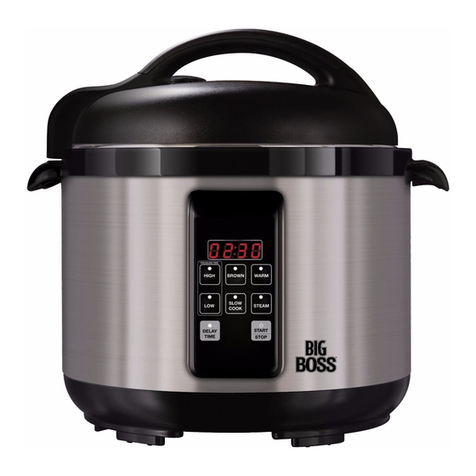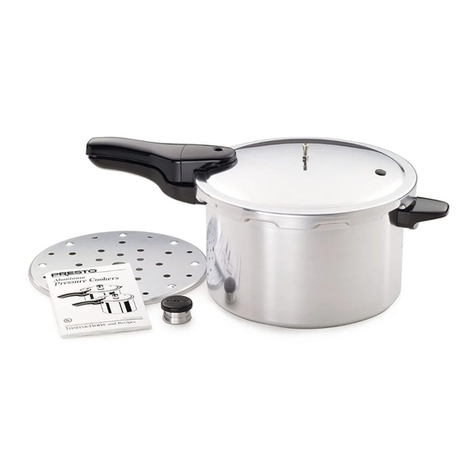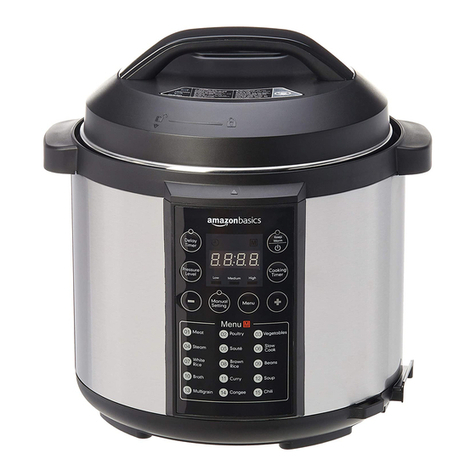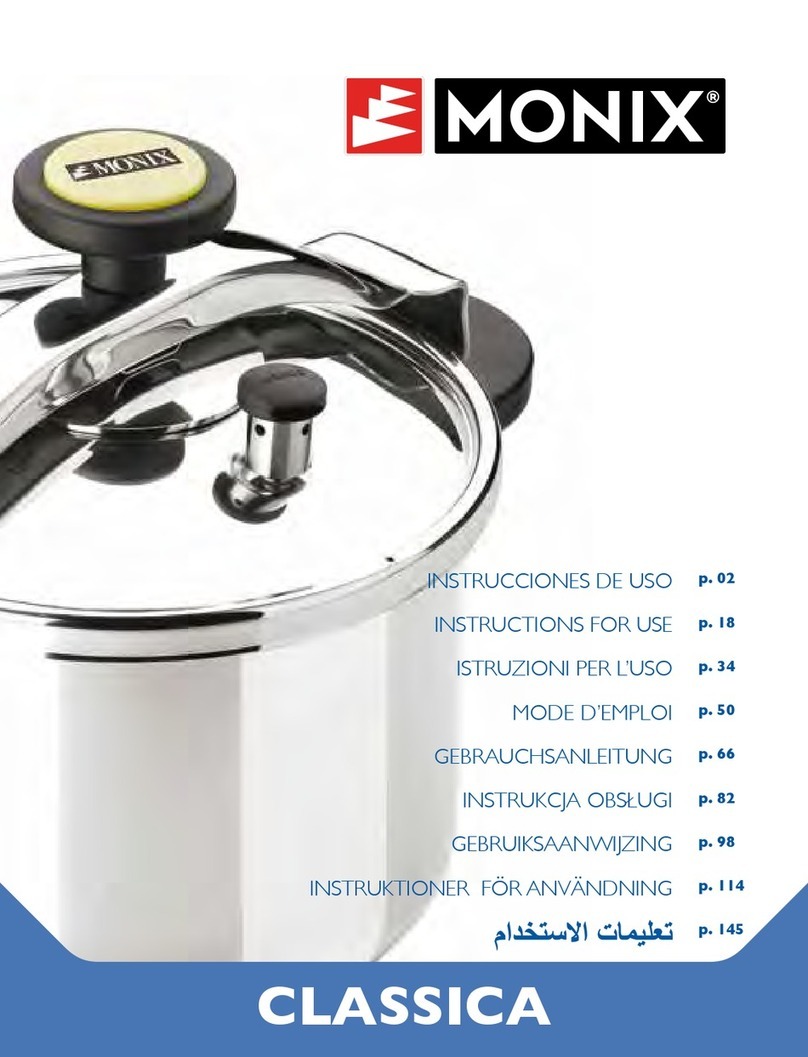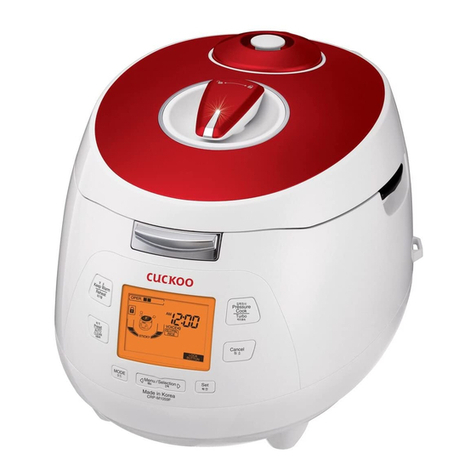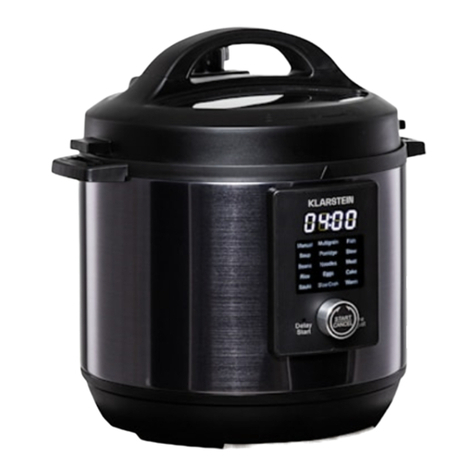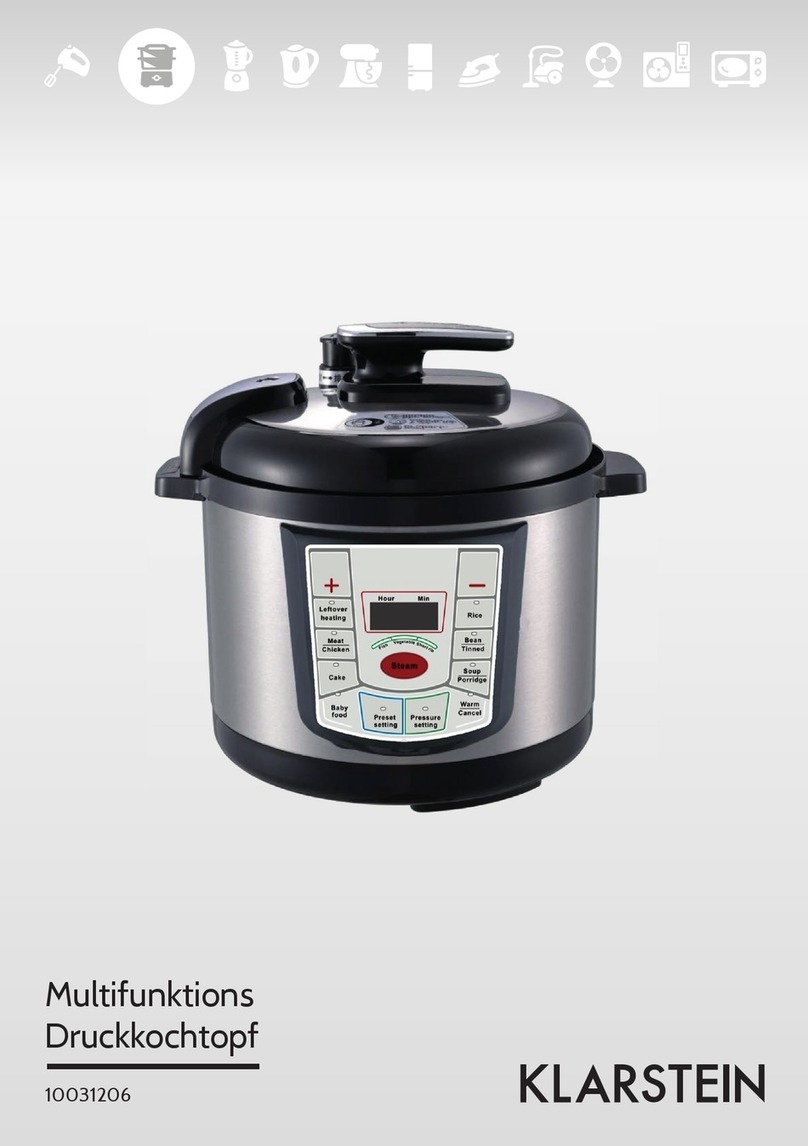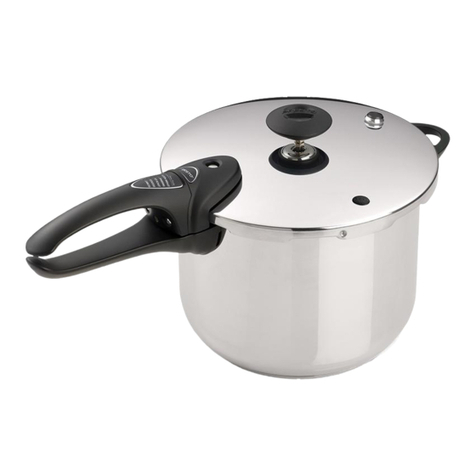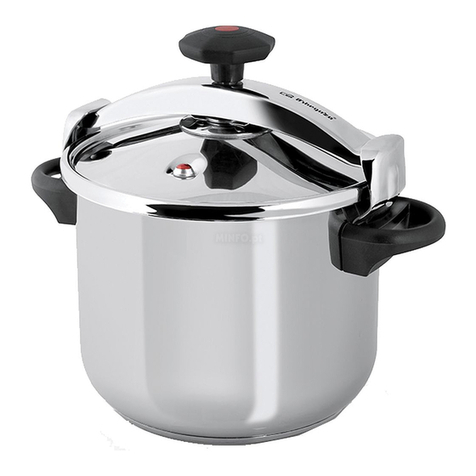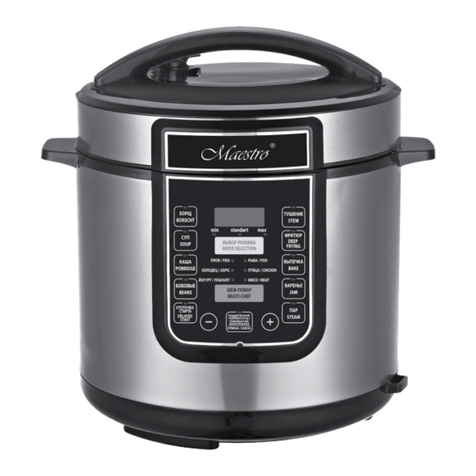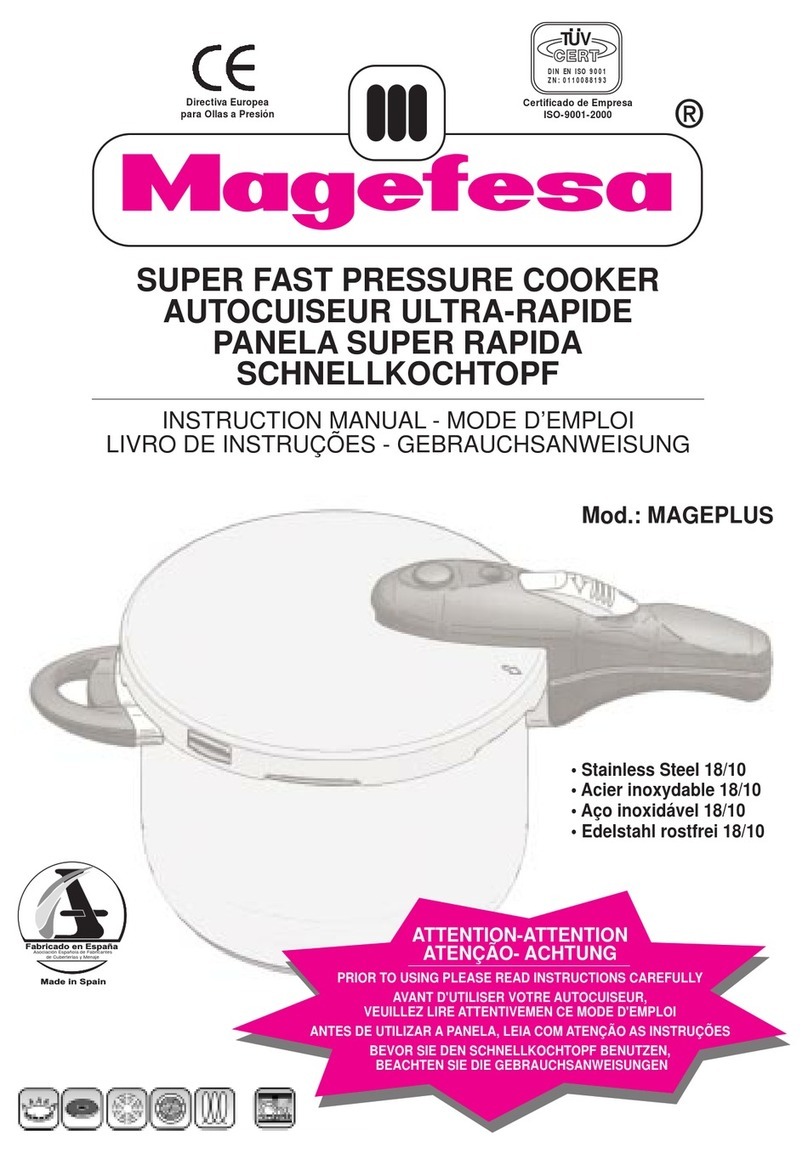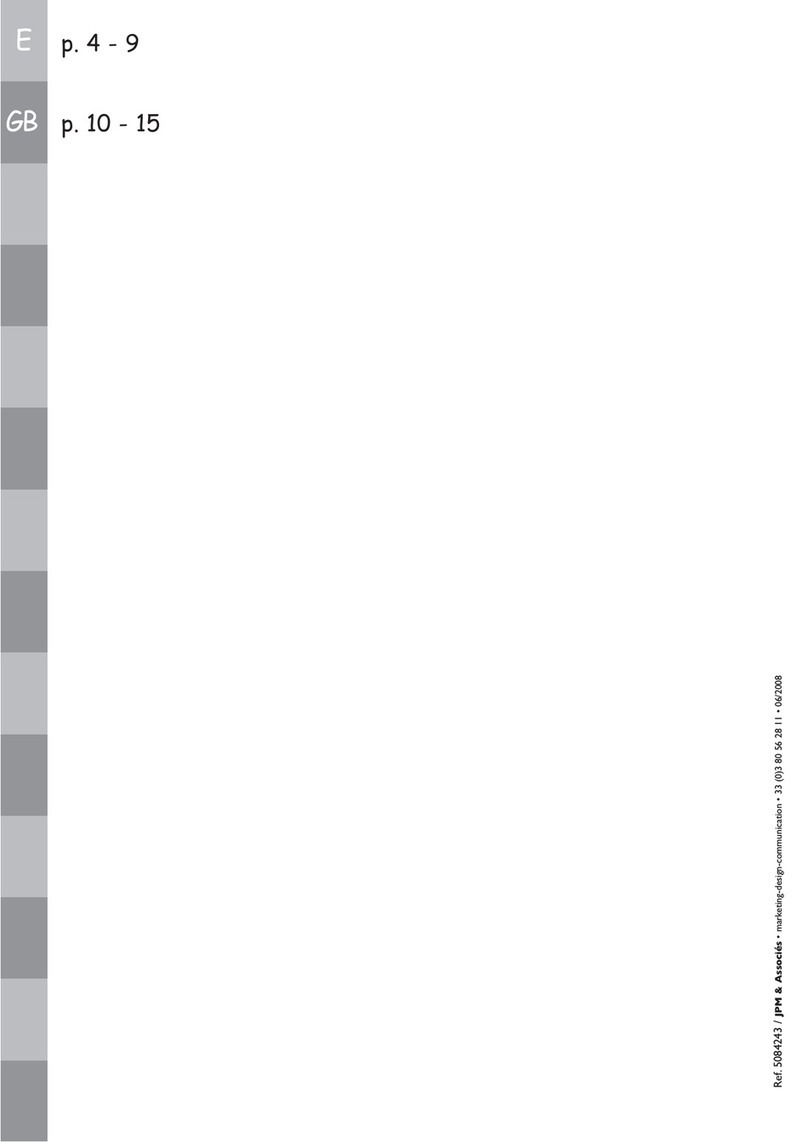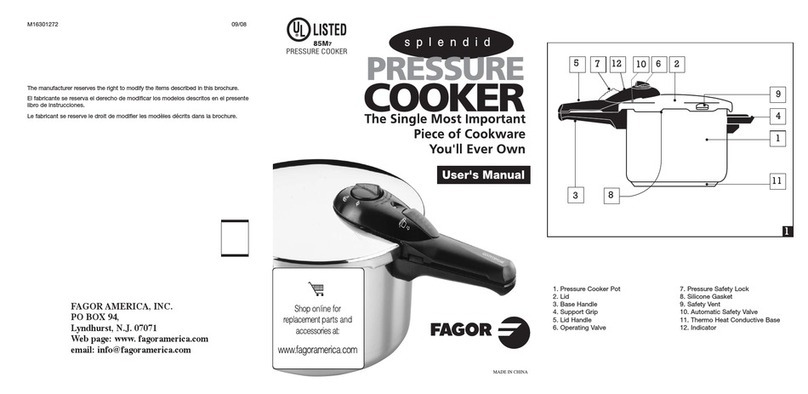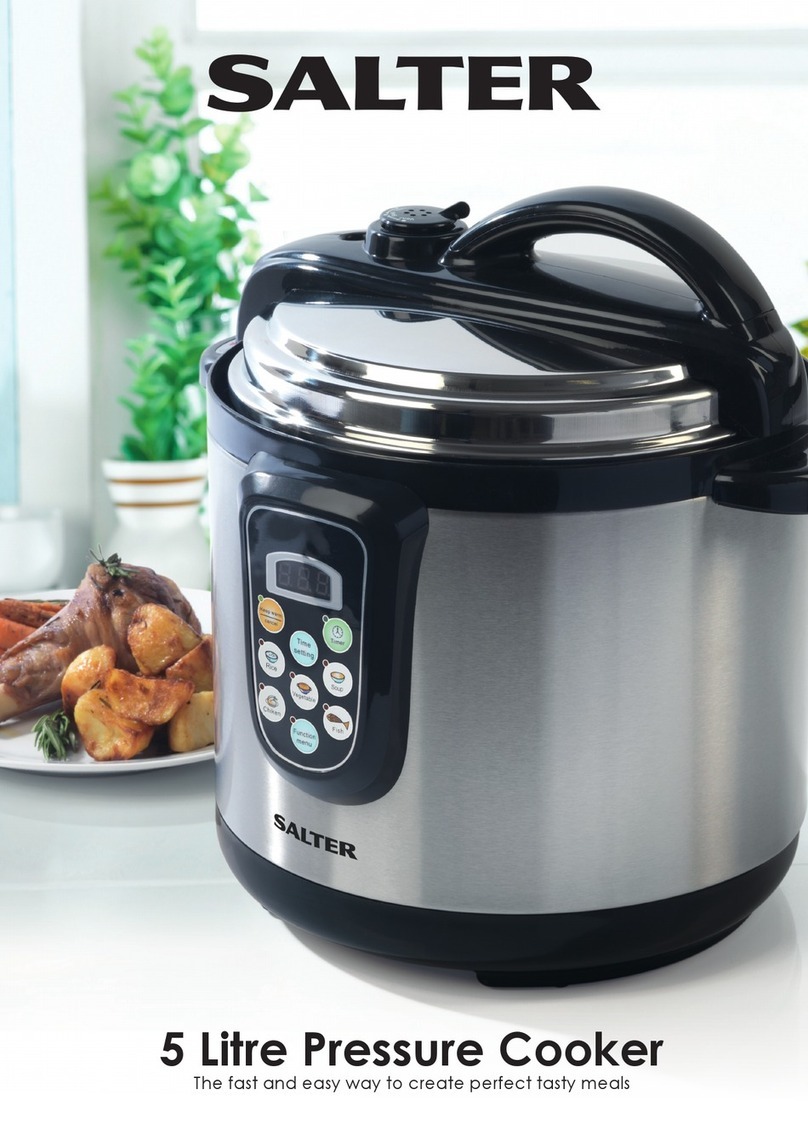
3
• Verwenden Sie den Dampfdruckkochtopf niemals im Backofen. Achten Sie darauf, dass der Topf eben steht.
Der Durchmesser der Kochplatte darf den Durchmesser des Topfbodens nicht überschreiten. Achten Sie bei
Gasherden darauf, dass die Flammen nicht um die Topfwand züngeln sondern nur den Topfboden berühren.
• Verwenden Sie den Dampfdruckkochtopf nicht, um Lebensmittel unter Druck zu braten. Erhitzen Sie den
Dampfdruckkochtopf niemals ohne Wasser. Ohne Wasser könnte der Dampfdruckkochtopf ernsthaft be-
schädigt werden, daher ist ein völliges Verdampfen der Flüssigkeit im Topf zu vermeiden.
• Falls Dampf während dem Kochen aus dem Sperr-/Sicherheitsventil oder aus dem Sicherheitsschlitz her-
ausströmt, schalten Sie die Wärmezufuhr umgehend ab und nehmen Sie den Topf von vom Herd. Überprü-
fen Sie alle Teile des Topfes bis Sie die Ursache beseitigt haben.
• Bewegen Sie den Dampfdruckkochtopf sehr vorsichtig, wenn dieser unter Druck steht. Berühren Sie nicht
die heißen Oberflächen, sondern verwenden Sie die Griffe und Henkel. Verwenden Sie gegebenenfalls
Handschuhe oder Topflappen. Setzen Sie ihn versichtig und langsam auf. Schützen Sie den Topf vor Stößen
und Erschütterung und achten Sie darauf, dass er nicht herunterfällt.
• Achten Sie darauf, dass der Sicherheitsschlitz immer von Ihnen weg zeigt.
• Das Druckregelventil darf nicht von anderen Gegenständen abgedeckt werden.
• Die Füllmenge (inkl. Kochgut und Wasser) darf bei festen Nahrungsmitteln nicht mehr als 2/3 des Fassungs-
vermögens betragen. Bei quellenden Nahrungsmitteln wie z.B. Reis, Bohnen usw. darf die Füllmenge nicht
mehr als 1/3 des Fassungsvermögens betragen.
• Öffnen Sie den Topfdeckel nicht, solange der Topf unter Druck steht.
• Achten Sie darauf, dass der Druckkochtopf vor dem Gebrauch richtig verschlossen ist, bevor Sie ihn erhitzen.
• Lassen Sie salzige, alkalische, zucker- oder essighaltige Flüssigkeiten bzw. Wasser über einen längeren zeit-
raum Zeit im Topf. Waschen Sie den Topf nach dem Gebrauch aus und trocknen Sie ihn ab.
• Vergewissern Sie sich vor jeder Benutzung, dass Sicherheitsventil und Druckanzeiger nicht verstopft sind.
• Öffnen Sie den Dampfdruckkochtopf niemals gewaltsam. Vergewissern Sie sich vor dem Öffnen, dass der
Innendruck vollständig abgebaut ist.
• Nehmen Sie keine Veränderungen an den Sicherheitsvorrichtungen vor.
• Verwenden Sie nur Originalersatzteile für das betreffende Modell. Achten Sie insbesondere darauf, dass Sie
dem Topf nur mit dem zugehörigen Deckel verwenden.
• Verwenden Sie den Topf nur auf geeigneten Wärmequellen.
• Wenn Sie Fleisch mit Haut gekocht haben, (z. B. Ochsenzunge) die unter Druckeinfluss anschwellen kann,
dann stechen Sie nicht in das Fleisch, solange die Haut angeschwollen ist. Sie könnten sich Verbrennungen
zuziehen.
• Verwenden Sie den Dampfdruckkochtopf nicht, um Nahrungsmittel unter Druck in Öl zu frittieren
Geeignete Wärmequellen
Gasherd Elektroherd Glaskeramik Induktion Halogen
